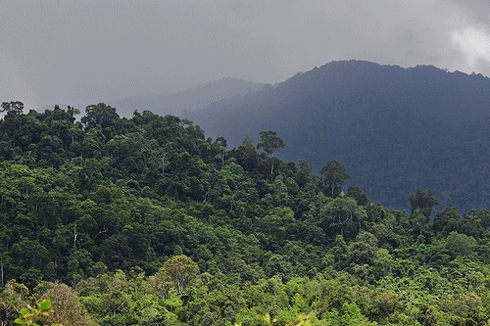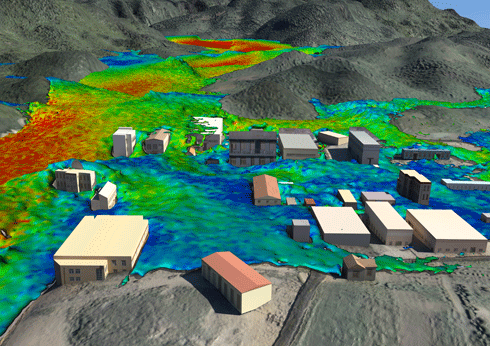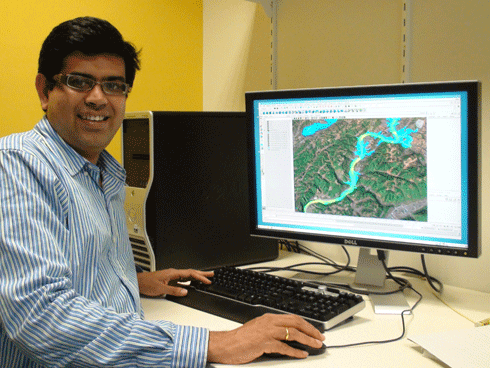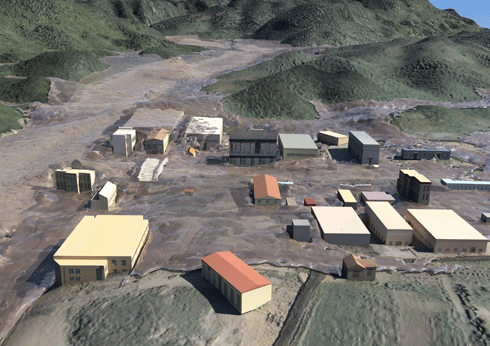
|
Published: 23 April 2012
Insurance model for UN forest carbon scheme
Serious challenges face those trying to use the UN’s REDD forest based emissions reduction scheme. A team of ecologists has proposed a new model that applies key concepts from the insurance industry to assess and manage the risks involved.

|
|
Ulu Masen forest, northern Aceh, Indonesia. This forest ecosystem forms part of the largest single forested area in South East Asia. A REDD project to protect it has been underway since 2008, involving the NGO Fauna and Flora International, the governments of Indonesia and the UK, and the World Bank. Credit:
UK Department for International Development Rights: Licensed under a Creative Commons Attribution Non-Commercial No Derivatives License |
REDD (Reduced Emissions from Deforestation and forest Degradation) is a UN scheme that allows countries to trade in carbon credits to keep forests intact. It is mainly targeted at developing nations where deforestation and exploitation are a major threat.
In a paper published online in the journal Conservation Letters, a team of ecology researchers from Australia and South Africa have proposed strengthening the scheme by using insurance policies and premiums, creating a new scheme known as iREDD.
‘The idea of paying a nation to protect its forests in exchange for carbon pollution offsets can potentially reduce overall emissions by keeping the trees alive, and ensure a lot of associated biodiversity gets caught up in the conservation process,’ says senior author of the paper Professor Corey Bradshaw of the University of Adelaide.
The paper points out three main challenges faced by REDD schemes: leakage, permanence and additionality.
‘Leakage occurs because the original forest area that was targeted for protection under the agreement remains intact, but the deforestation that would have otherwise occurred merely gets shifted to an adjacent forest, so the net effect is the same. It results in biodiversity loss and no emissions reduction,’ Professor Bradshaw says.
‘Permanence occurs because there is no guarantee that your investment – the forest – remains intact for a sufficient period into the future to account for the carbon being offset.
‘Additionality is a way of describing “what would have happened anyway”. In other words, if a particular area of forest was never targeted for deforestation, then being paid to maintain it is a false investment because the service was never in any real danger.’
Professor Bradshaw and colleagues from James Cook University and the University of Pretoria, South Africa, have suggested using an ‘insurance policy’ form of REDD, which they have dubbed ‘iREDD’, to avoid these problems.
iREDD involves the buyer and seller together assessing the risk in a forest conservation project, agreeing on that risk and then purchasing an insurance policy scaled to that risk.
‘iREDD can be used to ensure that both the seller and the buyer are protected. In this case, the seller represents those who manage the forests, and the buyer is the company, nation or individual who wishes to buy into the forest for its carbon offset potential,’ explains Professor Bradshaw.
‘If the sellers fail, then the buyer is compensated and can invest elsewhere. If the sellers do well, they get more money. Most importantly, it increases the probability that atmospheric carbon will be reduced – or at the very least, the rate of emissions will be slowed.’
Source: The University of Adelaide






